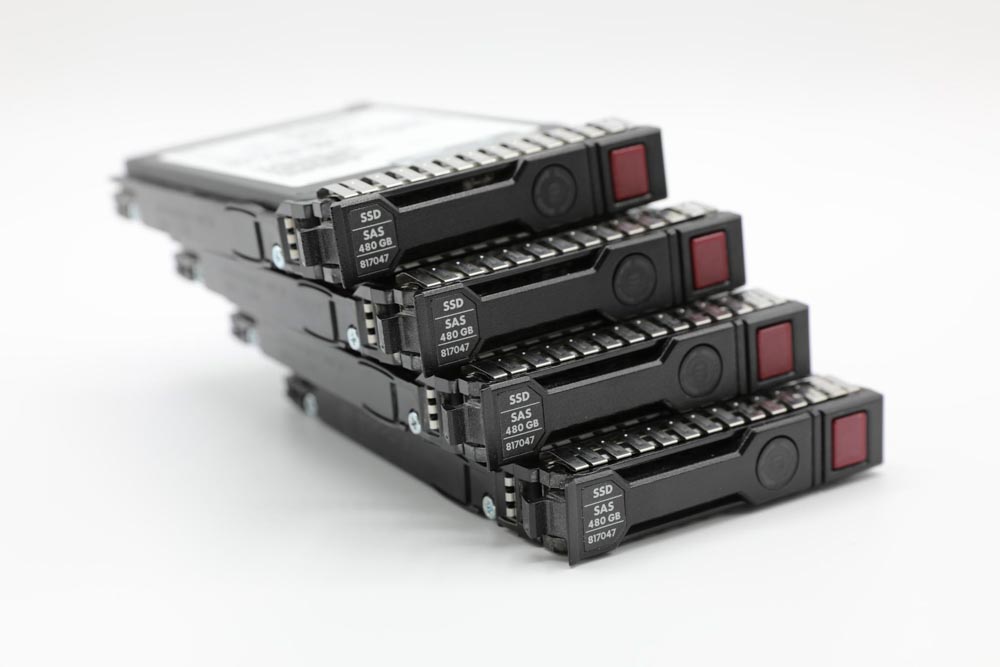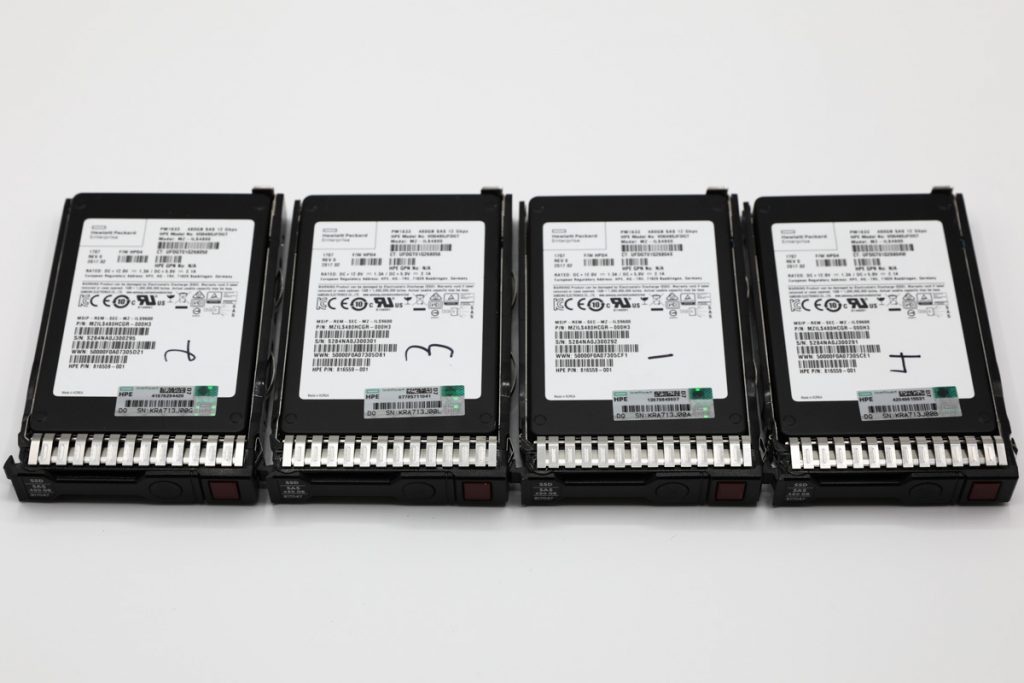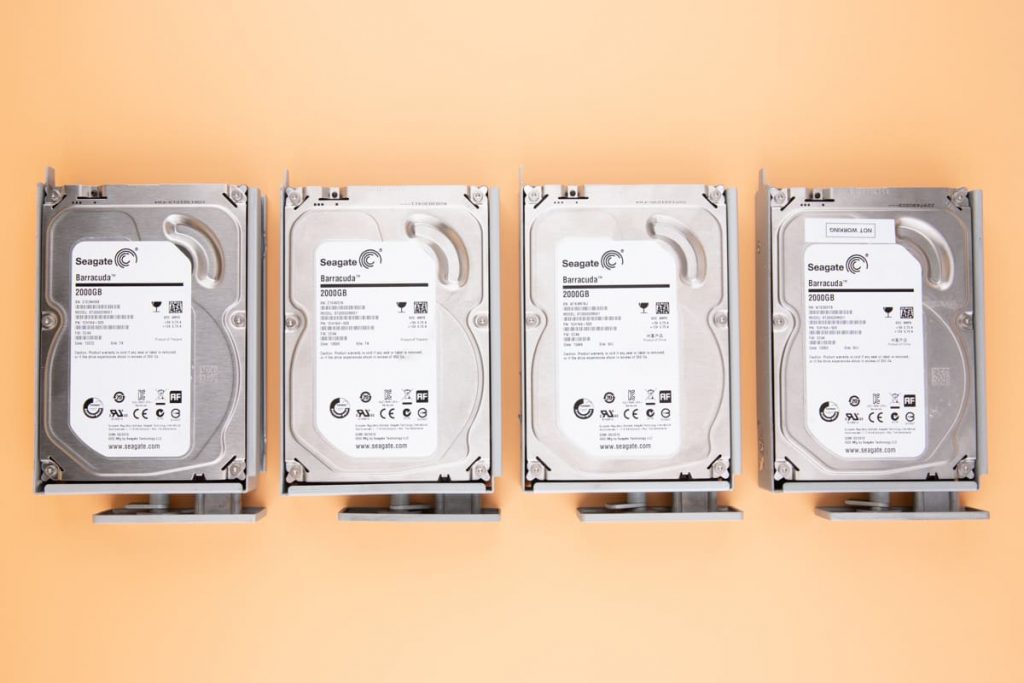The Dell PowerVault ME5 utilizes a RAID configuration, employing multiple disks for data storage. Data is written to different parts, divided into blocks, and stored across connected disks simultaneously. The RAID array setup dictates block number, size, and writing method.
Furthermore, the RAID arrays in Dell PowerVault ME5 offer various fault tolerance levels. Originally designed as a data storage solution to enhance data security, these systems, though robust, may still encounter failures and errors.
Dell PowerVault ME5 Data Recovery Case
If power outages or mechanical damage occur, the hard drive may fail, resulting in the loss of data access. Only a company specializing in hard drive recovery can help in such cases. The spindle drive or axis risks breaking or bending with strong mechanical stress on the hard disk.

Similar problems are typical for external hard drives. Power surges and power outages are fraught with damage to the electronic components of the spindle drive. As a result, the hard drive fails and requires repair.
With the trend towards higher data density, contemporary hard drives now utilize hydrodynamic ball bearings over traditional ones. Should these bearings fail, the spindle motor ceases to rotate, rendering the hard disk inoperable.
Our team recently received a request for RAID 5 data recovery on a Dell PowerVault ME5. The customer reported a slowdown in the array’s performance, followed by a total failure. They sent their device to our lab for initial diagnostics and data recovery services.
"*" indicates required fields
Data Recovery from The Magnetic Platters
Our company received the Dell PowerVault ME5 device alongside with the hard drives, and engineers started evaluation right away. Two HDDs were not operating at all. Technicians unsealed each drive in an ISO Certified Class 10 Cleanroom to investigate physical failures.
One hard drive had a head crash and scratched the magnetic platter, leading to data loss. The head crash happens when the block of read/write heads falls on the surface of the platters.
The particle of the magnetic layers contaminates the sensitive parts of the HDDs. The data on the scratched parts of the magnetic platters become irreversibly lost. The array could function only with one failed hard disk drive.
But as the media storage used in an array is bought from the same manufacturer simultaneously, the lifetimes are very close to each other. The second failed drive had a spindle motor damaged. The spindle motor is the most critical component of a hard drive, responsible for rotating the drive platters on the axis. The spindle ensures the trouble-free operation of the hard drive for a long time.
Firstly, our engineers started the Dell PowerVault ME5 recovery process by eliminating any particles from the magnetic platters and the block of magnetic heads. They used an ultrasonic cleaner to eliminate even the smallest dust particle.
The specialists estimated that the data loss was due to the irreversibly damaged parts of the magnetic heads. After getting approval from the client, we continued conducting the RAID 5 data recovery process.
HDD Spindle Dell PowerVault ME5 Motor Recovery
Due to the hard disk failure, the RAID had increasing data density, and the second hard drive hydrodynamic ball bearing wore off. The spindle motor stopped rotating, making the data inaccessible. The data recovery process for failed spindle motors is relatively more straightforward.

Our engineers unsealed the hard drive, took magnetic platters from the failed hard drive, and placed them on a new, fully functioning one. The most complex step of the magnetic platters replacement is to align them, as the data reading/writing must be synchronous on each platter.
With years of experience and a vast range of donor parts, PITS Global Data Recovery Services could quickly rebuild the RAID configuration.
Our RAID data recovery services’ technicians restored the array and arranged a remote file verification for the customer to check the result. The client approved the RAID data recovery, and we shipped his device back to him.
PITS Global Data Recovery Services will help restore your data storage device and access essential files stored on it. We solve almost any data recovery problem from hard drives, external drives, RAIDs, servers, and other media.
The recovery process is performed by experienced recovery specialists in safe and sterile cleanroom conditions using advanced technologies. Contact our dedicated customer service line or fill out the request help form to start your recovery case today.
Customer File Verification Session After Recovery Process
After successfully recovering data from a damaged Dell PowerVault ME5, conducting a customer file verification session is necessary. This step verifies that all recovered files are accessible and error-free.
At PITS Global Data Recovery Service, we prioritize this practice, offering our clients a preview of recoverable files before finalizing the recovery process.
During the verification, our team meticulously checks the integrity of the recovered data, ensuring everything is returned to its original, usable condition. Should any discrepancies arise, we’ll reprocess the data to guarantee complete and accurate recovery for our customers.
We understand the importance of recovering lost data, whether personal photos or critical business documents. We use cutting-edge technology and techniques to recover data from various storage devices, including hard drives, solid-state drives, USB flash drives, memory cards, and more.
Conclusion
In conclusion, Dell PowerVault ME5 offers a reliable and efficient RAID system for data storage. However, like any other technology, it is not immune to failures and errors. In the event of data loss from a damaged hard drive, it is essential to seek professional help for data recovery. PITS Global Data Recovery Service has a team of experts with extensive experience recovering data from various RAID systems, including Dell PowerVault ME5.
With our advanced techniques and modern equipment, we can recover your valuable data and provide you peace of mind. Don’t risk losing your critical data – contact us for reliable and efficient data recovery services today.
Frequently Asked Questions
What is RAID controller failure?
RAID controller failure happens when the hardware managing the RAID array malfunctions. This can disrupt data distribution and parity calculations and drive monitoring, leading to data inaccessibility or loss.
Can RAID 5 be recovered?
Yes, it is likely to recover RAID 5 in many circumstances, but the recovery process can be complex. It involves replacing the failed drive and initiating a rebuild. Professional assistance may be needed if multiple drives fail or issues arise.
Which RAID is best for data recovery?
RAID 1 (mirroring) is considered the best RAID level for data recovery. In RAID 1, data is mirrored across two drives, providing redundancy. If one drive fails, the data is still accessible from the other drive. This redundancy simplifies recovery in case of drive failure.
What is the fastest RAID for recovery?
RAID 0 (striping) boosts read and write speeds without redundancy, lacking data protection—backups are crucial. RAID 10 (striped mirroring) offers a balance between speed and safety, serving as an effective compromise for performance and recovery.
How does RAID fail?
RAID can fail due to drive malfunctions, human errors, controller issues, power surges, data corruption, and inadequate monitoring. A reliable backup plan is crucial to minimize consequences.
